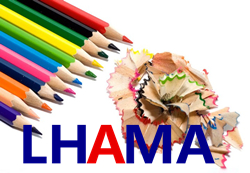Hello,Welcome to Normal Website!
Hello,Welcome to Normal Website!

Contact US
Tell:+86-571-85691658
Fax:+86-571-28867000
E-mail:service@normaltci.com
Address:North block, 9 block,, Jiangling, Binjiang District, Hangzhou, Zhejiang

Restricted Chemical Substances

LHAMA certification

The Labeling of Hazardous Art Materials Act, abbreviated as LHAMA, is an important law that has a significant impact on the export of art materials to the United States. According to the regulations of 16 CFR 1500.14B8 of the Consumer Product Safety Commission (CPSC) in the United States, art materials should be certified under the Art Materials Toxic Labeling Act (LHAMA) in accordance with ASTM D4236 standards. Art materials include pigments, crayons, brushes, pencils, chalk, glue, ink, canvas, etc.
This certification needs to be conducted by a toxicologist recognized by the American Society of Toxicologists. Toxicologists will evaluate the potential chronic harm of products to health.
LHAMA came into effect in 1999, requiring all art materials sold in the US market to undergo chronic toxicity assessment in accordance with the requirements of the law. These art materials include common stationery items such as crayons, pencils, chalk, ink, glue, pigments, canvases, etc. The law stipulates that toxicologists engaged in evaluations must be accredited by the American Society of Toxicologists (ABT). Manufacturers or repackaging sellers of art materials should provide ABT toxicology experts with the ingredient formula of art materials to analyze whether they will produce chronic harmful components to health. In order to enforce the Hazardous Art Materials Labeling Act (LHAMA), the US Consumer Product Safety Commission (CPSC) issued legislation on October 9, 1992, approving ASTM D4236 as a mandatory standard for LHAMA testing.
On February 13, 1995, CPSC issued a legal document defining artistic materials.
——The following products cannot violate LHAMA regulations:
(1) Pencils, pens, markers, chalk, etc. that can be used for general purposes but not necessarily only for artistic purposes;
(2) Auxiliary tools and devices used in artistic creation;
(3) Surface materials, such as colored books and canvas.
However, whether it is defined as an artistic material does not solely depend on the product itself. CPSC considers multiple factors when determining whether it is an artistic material, including packaging, market ownership, and sales location.
On the other hand, starting from August 13, 1995, regardless of whether paint, crayons, colored pencils, glue, etc. are sold as part of art, crafts, models, or collectibles, or sold separately, as long as they can be used on art, crafts, models, or collectibles, CPSC will enforce LAHMA requirements on them.
After being evaluated by a recognized ABT toxicologist, if the product has the potential to cause chronic toxicity that is detrimental to health, LHAMA requires the following labeling:
(1) There is a warning word;
(2) Statements of potential danger;
(3) Name of chronic hazardous ingredient;
(4) Safety handling instructions;
(5) Allergy ingredient name;
(6) Ways to obtain health information materials;
(7) If necessary, more detailed technical data should be added to the supplementary documents.
Even if artistic materials do not have chronic toxicity, the "conform to ASTM D4236" logo should be printed on the packaging and products to make it clear to consumers that the product they are purchasing meets the requirements.
Please consult NormalTCI for specific questions
National service hotline: 400-6177-880
Email:service@normaltci.com
Copyright @ 2015 NORMAL (HANGZHOU) TESTING & CERTIFICATION CO., LTD.
Tell:+86-571-28906690 E-mail:service@normaltci.com Service Hotline:400-6177-880 Fax:+86-571-28867000
If you have any comments on the website, please email to:service@normaltci.com